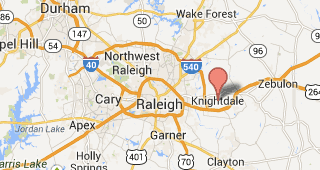Types of Bankruptcy in North Carolina
Probably the most basic question after "what is bankruptcy?" is what are the different types of bankruptcy. Title 11 of the United States Code is organized into chapters, with chapters 7, 9, 11, 12, 13, 15 providing for particular sorts of bankruptcy relief. Additionally, bankruptcy is somewhat different for a individual person compared to a business entity, such as a corporation.
Individual (Consumer) Bankruptcy
Individual persons file bankruptcy to obtain relief from their debts and obtain a fresh start financially. There may be opportunities to adjust secured loans (e.g. a car loan) depending on circumstances. An automatic stay prevents collection activity while the consumer's case is pending. Ultimately, a discharge may be granted ending personal liability on discharged debts.
Chapter 7 Bankruptcy
In Chapter 7 or "straight bankruptcy," a trustee is appointed to collect and sell a debtor's assets for benefit of creditors. However, the debtor is allowed to keep property within certain property allowances called exemptions. Furthermore, property must be worth enough that selling it would pay off anything owed on the particular item and still benefit other creditors. Consequently, many chapter 7 cases are "no asset" cases, where no property of the debtor is sold by the trustee, and nothing is paid to creditors by the trustee. Most cases proceed quickly to discharge, enabling the debtor to get a fresh start and get on with their life.
Chapter 13 Bankruptcy
In Chapter 13 bankruptcy, the debtor's future income is the source of funds, instead of the debtor's assets. Early in the case, the debtor will propose a plan of how much money to pay in monthly, and what creditors receive payments. How much has to be paid and how creditors are treated is closely regulated by the bankruptcy code. Debtors may make payments for up to 5 years, but may also complete faster than that. Depending on the debtor's income, unsecured creditors, such as credit card companies, may receive payments or may have their indebtedness discharged without payment at plan completion. Chapter 13 is powerful in its ability to cure defaults on loans, such as mortgage loans, thereby repaying the missed payments and allowing the debtor to proceed with the lending relationship after bankruptcy. Debtors in chapter 13 maintain a higher degree of control over the case, but also have more ongoing responsibility.
Individual Chapter 11 Bankruptcy
While Chapter 11 Bankruptcy is typically associated with reorganizing businesses, it is also available for individual persons. However, there are significant added costs associated with Chapter 11 compared to Chapter 13, and would typically be only recommended for debtors with unusual or very large debts or assets.
Business Bankruptcy
Businesses file bankruptcy either to attempt to workout a debt insolvency issue and continue in business, or to orderly liquidate the business under court supervision. Chapter 13 is not available for business entities, although individuals operating a business as a sole proprietorship may reorganize their business debts alongside their consumer debts in Chapter 13.
Chapter 7 Business Bankruptcy
Chapter 7 bankruptcy for a business provides for the orderly liquidation of a business entity, under the direction of a bankruptcy trustee and supervision of the bankruptcy court.
Chapter 11 Bankruptcy
Businesses use Chapter 11 Bankruptcy to propose a plan of reorganization by which they will restructure their debts. Chapter 11 can also be used for orderly liquidation of a business or part of a business under the control of the debtor with court supervision.
Less Common Bankruptcy
Chapter 12 provides for reorganization of family farms, and is in many respects similar to chapter 13. Chapter 9 is used for municpalities and other local government entities. Chapter 15 provides for the recognition of foreign bankruptcy proceedings in the US courts.


